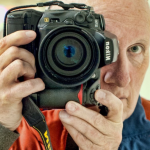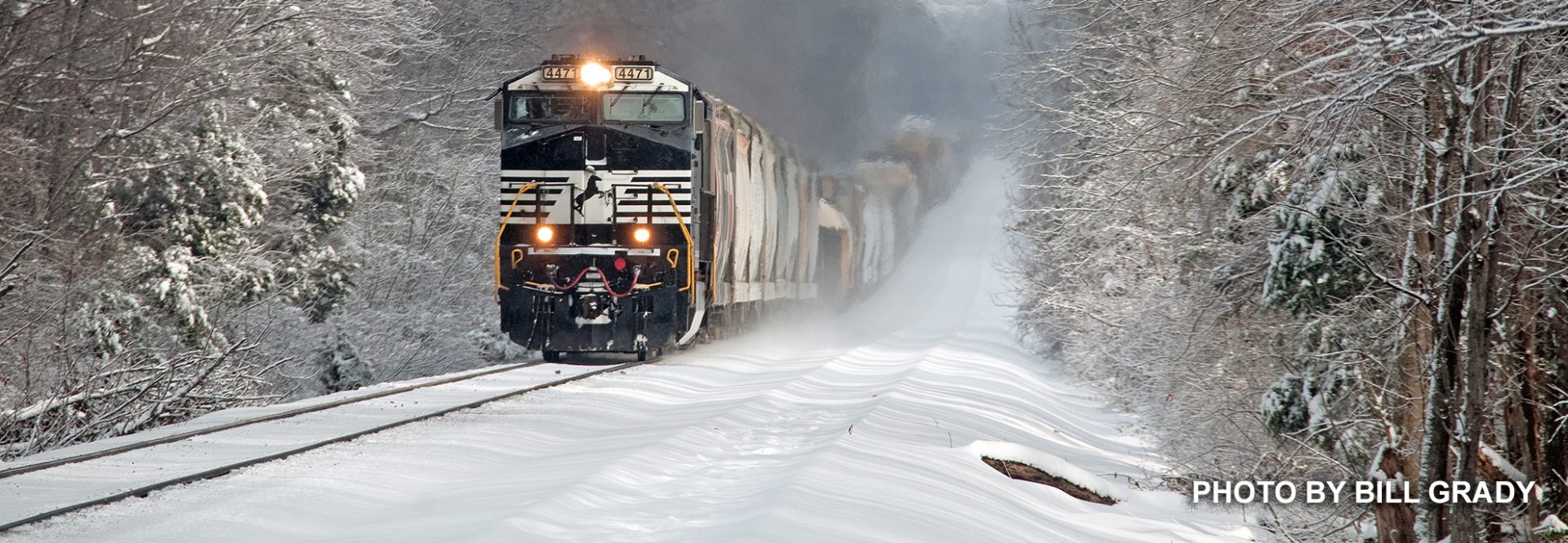
In this post, I’ll be talking about some of the many options available for shooting Time-lapse videos of railroads, or any subject matter.
Time-lapse photography is a technique whereby the frequency at which film frames are captured (the frame rate) is much lower than that used to view the sequence. When played at normal speed, time appears to be moving faster and thus lapsing. For example, an image of a scene may be captured once every second, then played back at 30 frames per second; the result is an apparent 30 times speed increase. Time-lapse photography can be considered the opposite of high speed photography or slow motion.
Processes that would normally appear subtle to the human eye, e.g. the motion of the sun and stars in the sky, become very pronounced. Time-lapse is the extreme version of the cinematography technique of undercranking, and can be confused with stop motion animation.
Here is my most recent time-lapse video of CSX crews changing out a bridge in Ft. Branch, Indiana.
I use a Nikon D800 full frame camera when shooting my time-lapses. While many cameras, including an iPhone, are capable of doing this, my post will center around how I do mine using my equipment. At the end of the post I’ll list some other options available and by no means will this post or list be all inclusive. The above video was shot using a Nikkor 18mm a f/8 at an interval of 1 second.
I like using the D800 for doing time-lapse because when it’s finished shooting the camera combines all the individual frames together in the camera and saves them as a video instead of individual JPG or RAW files. So far, I’ve only shot using JPG Fine because of file sizes and storage on my Compact Flash Card.
Plan Ahead – Think and plan ahead on how you’re going to do your time-lapse and pick a good subject that will have plenty of action! It’s not a good idea to arrive 5 minutes before the action starts! Also, if you’re going to have to shoot on private property then you’ll need to obtain permission first. If it’s from public access then it’s not as big a problem. Above all else when photographing around trains or other heavy equipment you need to always be aware of your surroundings, stay safe and never trespass!
Don’t Forget Anything – When shooting time-lapse you can spend several hours standing by the side of the road out in the boonies so it’s good to be prepared! Not to sound like your mom, but you should take enough water and food. If it’s winter or foul weather then spare socks, shoes, warm coat and gloves. In summer, more water, a hat and sunscreen are must haves! A fully charged cell phone and something to read will help pass the time as well. Of course, it goes without saying your camera and tripod and all the batteries you can carry for your camera.
Batteries – Shooting a time-lapse will drain your batteries quickly so always take spares! If you shoot in 1 second intervals then that’s 60 photos a minute. Multiply that by an hour (gives you 30 seconds of video at a frame rate of 30 FPS) and you’re shooting 3,600 photos an hour! If you only have two batteries then consider taking your battery charger along and charging your spare battery in the car. The key is to keep the camera shooting pictures and if you run out of juice then your time-lapse will suffer for it.
Tripod – You need a good sturdy tripod! If you only have a lightweight one then consider attaching a weight to the center pole in order to give it more stability. If the camera moves or shakes between exposure it can result in a shaky video. This is extremely important if your shutter speed is on the slow side because of the lower light levels, which can make for some interesting blur effects.
Exposure Mode – Whatever camera you use, set it to manual mode. Any other mode where the camera controls and changes the aperture or shutter speed, the camera will try to correct every change of light and color temperature, which can result in a flicker in your video. “Flicker” is known as the unwanted effect that occurs in the “time-lapse” due to slight differences in exposure between shots.
Focusing – I suggest turning off the autofocus and doing so manually instead. While the time-lapse is exposing it shouldn’t cause a problem as long as you don’t touch the shutter button on your camera, but it’s better to be safe than sorry. You can use autofocus to focus once you have your framing setup and then turn it off during your time-lapse sequence. Don’t forget to refocus when you change your camera position.
Shutter Speed – I tend to keep my shutter speed a bit high, but here again it all depends on the light and time of day. If you’re shooting late in the evening or at night then you may have to use a slower shutter speed. When doing so keep in mind that if you’re shooting at 1 second intervals that with a 10 second exposure (low light photography) it’s going to take more than 1 second interval to record your file to your card. You may have to adjust accordingly.
Aperture and Exposure – All lenses have a sweet spot (it’s sharpest point). I find that 2-3 stops from your widest aperture is the best. If shooting with a f/2.8 lens then that would be at f/8. Be sure to watch your exposure throughout the day and make sure it’s consistent. The sun move and exposure changes so to make sure it’s even throughout check it every time you change the camera’s position or at least once an hour, is my rule of thumb.
Lens – This all depends on your preference. Sometimes I’ll use a 24-70 so I have the option to zoom in on different aspects of the scene without changing lenses. On the time-lapse above I used a 18mm at f/8.
Time Lapse Duration – I personally prefer having the camera shoot a photo in the 1-2 frames a second range. The CSX bridge change video was shot at 1 second intervals.
To make your time-lapse a bit more interesting visually it’s best to stop the time-lapse and re-position the camera every so often to help give more visual impact.
A good app and the one I use to figure out my interval is called PhotoPhills. It runs $9.99 in the app store, but is well worth it and does a lot more than the time-lapse calculations. Their website is: http://www.photopills.com/
The app will help you figure out how often you need to expose, how long and how much room you’ll need on your card to store all the information that you capture. If your camera doesn’t combine everything together in the end to make your video your card may require a lot of space to store the thousands of JPGs or RAW files. Here’s a link to an online version of their Timelapse Calculator you can use for free.( http://www.photopills.com/calculators/timelapse)
If your camera doesn’t combine your JPGs or RAW files then you’ll need to look for a program to combine all the resulting files into a video clip that you can edit. There are several programs available to do this, some of which are listed below.
One of the most popular is LRTimelapse (https://lrtimelapse.com/). A few others are: GBTimelapse, Time-Lapse Tool and Panolapse. There is many more and to find them just do a Google search.
Here’s a good article on how to shoot time-lapse using your iPhone or iPad. There’s many other apps for doing this with your smart device. Just search your phone’s app store. How to Take Amazing iPhone Time Lapse Videos (https://iphonephotographyschool.com/iphone-time-lapse/) To give my time-lapse the polished look complete with titles and transitions I use Adobe Premiere Pro CC, the online version. It’s available for a subscription fee of $19.99 a month. There’s many other programs available to edit video however and most all do a good job
There is so much more to shooting time-lapse, but I hope this post will at least give you a good starting point and food for thought!
Here’s another time-lapse I did on replacing a switch at Mortons Gap, Ky.
